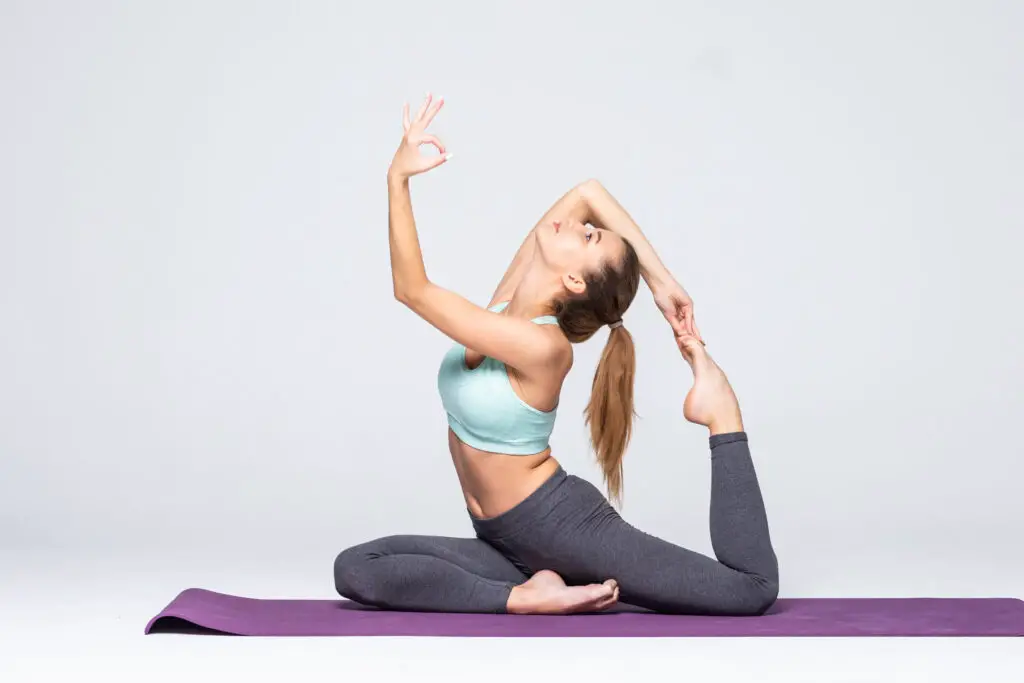How to fart position?
How to fart position?- Wonder?
Are you curious about the best position for farting? It might seem like a humorous topic, but the way you position yourself can actually impact how discreet and comfortable the act is.
In short, the ideal farting position depends on several factors, including your surroundings, comfort level, and the need for discretion.
Finding the right balance between these factors can make all the difference.
Ready to dive deeper into the nuances of the optimal farting position? Let’s explore different scenarios, expert tips, and practical advice to ensure your farting experiences are as smooth and inconspicuous as possible.
Here how to make fart noises with your hand?
What is fart position?
How to fart position? See now
To release gas comfortably, try the following positions:
- Sitting: Sit upright on a chair or cross-legged on the floor. Lean slightly forward to allow gas to escape more easily.
- Kneeling: Kneel on the floor with your buttocks resting on your heels. This position can help release trapped gas.
- Lying down: Lie on your side with your knees tucked toward your chest. This position can aid in passing gas and relieving bloating.
- Standing: Stand with your feet hip-width apart and slightly bend your knees. This position can also assist in passing gas.
Remember, passing gas is a natural bodily function.
If you experience excessive gas or discomfort, consider adjusting your diet to include more fiber and stay hydrated to aid digestion.
How to fart position?
“Fart position” typically refers to a posture or position that facilitates the release of gas from the digestive system.
Different positions can affect how gas moves through the body and how easily it can be expelled.
Here, how to eat fart?
For example:
- Sitting: Sitting upright or leaning slightly forward can allow gas to escape more easily due to the relaxed abdominal muscles.
- Kneeling or squatting: These positions can help open up the pelvic area, making it easier for gas to pass.
- Lying down: Lying on one’s side with the knees bent can also aid in releasing trapped gas.
- Standing: Standing with a slight bend in the knees can sometimes help in passing gas.
People often adopt these positions instinctively when they feel the need to pass gas or when experiencing discomfort due to bloating.
15 fart positions to relieve gas
How to fart position?- You see
1. Sitting Upright
Sitting upright on a chair or a flat surface with proper back support can aid in releasing gas.
The posture opens up the abdominal area, allowing gas to move more freely through the digestive tract.
It’s important to sit comfortably without slouching, as slouching can compress the abdomen and make it more difficult to expel gas.
2. Leaning Forward
Leaning slightly forward while sitting can further assist in passing gas. This position helps to relax the abdominal muscles and encourages the gas to move out of the body.
It’s a simple adjustment that can be made while sitting at a desk, on a chair, or even on the floor.
3. Kneeling on All Fours
Kneeling on all fours, also known as the “cat-cow” yoga position, can be beneficial for releasing gas.
This posture helps in stretching the abdominal muscles and opening up the digestive organs, facilitating the passage of gas more comfortably.
Here, how to far properly.
4. Lying on Your Back with Knees Bent
Lying on your back with your knees bent and feet flat on the ground can create a natural curve in the lower back, which can help release gas.
This position also allows for gentle stretching of the abdominal area, promoting better digestion and gas elimination.
5. Lying on Your Side with Knees Bent
Lying on your side with your knees bent towards your chest can be effective in relieving gas.
This position can help in releasing trapped gas pockets by applying gentle pressure on the abdomen.
6. Lying on Your Stomach
Lying face down on your stomach can sometimes help in passing gas.

The pressure from the body on the abdomen can encourage the movement of gas through the intestines, aiding in its release.
7. Child’s Pose (Balasana)
Child’s Pose in yoga involves sitting back on your heels with your knees spread apart while bending forward and resting your forehead on the ground.
This posture can gently compress the abdomen, aiding in the expulsion of gas.
Here, how to make a fafrt smell?
8. Squatting
Thus, Squatting is a natural position that can help release gas.
Squatting down with your feet flat on the ground and your buttocks close to your heels can open up the pelvic area, allowing gas to escape more easily.
9. Happy Baby Pose (Ananda Balasana)
Happy Baby Pose in yoga involves lying on your back, grabbing the outer edges of your feet, and pulling your knees towards your armpits.
This pose can help in stretching the lower back and opening up the hips, potentially assisting in gas release.
10. Bridge Pose (Setu Bandhasana)
Bridge Pose in yoga involves lying on your back with your knees bent and feet flat on the ground, then lifting your hips towards the ceiling.
This posture can help in stretching the abdominal muscles and promoting better digestion.
11. Seated Forward Bend (Paschimottanasana)
Seated Forward Bend in yoga involves sitting on the floor with your legs extended in front of you, then bending forward to reach towards your feet.
This posture can aid in stimulating the digestive organs and relieving gas.
12. Half Gas Release Pose (Ardha Pavanamuktasana)
Half Gas Release Pose in yoga involves lying on your back, bending one knee towards your chest, and hugging it with your hands.
This pose can help in releasing gas from the lower abdomen.
13. Cobra Pose (Bhujangasana)
Cobra Pose in yoga involves lying on your stomach, placing your palms under your shoulders, and lifting your upper body while keeping your pelvis grounded.
This posture can stimulate digestion and potentially aid in gas elimination.
14. Cat-Cow Stretch (Marjaryasana-Bitilasana)
The Cat-Cow Stretch in yoga involves alternating between arching your back up like a cat and dropping your belly down like a cow.
This movement can massage the digestive organs and promote gas release.
15. Wind-Relieving Pose (Pawanmuktasana)
Wind-Relieving Pose in yoga involves lying on your back, bringing one knee towards your chest, and hugging it with your hands.
Here, how to art louder longer and stronger?
This posture can help in releasing gas and relieving bloating in the lower abdomen.
These positions can be effective in relieving gas and promoting better digestion.
However, if you experience persistent gas or digestive discomfort, it’s advisable to consult a healthcare professional for proper diagnosis and treatment.
7 gas relief postions for adults
You see, how to fart position?
1. Standing with Knee Raises
Stand upright with your feet hip-width apart. Lift one knee towards your chest, holding it with both hands for a few seconds, then release and switch to the other knee.
This movement can help stimulate the digestive system and relieve gas by gently compressing the abdominal area.
2. Seated Twist (Ardha Matsyendrasana)
Sit on the floor with your legs extended in front of you.
Bend one knee and place the foot on the outside of the opposite leg. Twist your torso towards the bent knee, placing the opposite elbow on the outside of the bent knee for support.
Hold the twist for a few breaths, then switch sides. This twist can aid in improving digestion and easing gas discomfort.
3. Reclining Twist (Supta Matsyendrasana)
Lie on your back with your arms stretched out to the sides.
Bend one knee and bring it across your body towards the floor on the opposite side while keeping the opposite shoulder grounded.
Hold the twist for a few breaths, then switch sides. This reclining twist can help in releasing trapped gas and promoting relaxation.
4. Supported Forward Bend (Supta Padangusthasana)
Lie on your back with your legs extended.
Use a strap or towel around the sole of one foot and gently pull the leg towards your chest, keeping the other leg grounded.
Hold the stretch for a few breaths, then switch legs. This pose can aid in stretching the abdominal muscles and relieving gas buildup.
5. Child’s Pose (Balasana)
Thus kneel on the floor and sit back on your heels. Extend your arms forward and lower your forehead to the ground, resting in this pose with deep breaths.
Child’s Pose can help in relaxing the abdominal muscles and facilitating the release of gas.
6. Legs Up the Wall Pose (Viparita Karani)
Sit close to a wall and lie down on your back, extending your legs up the wall.

Keep your arms relaxed by your sides. This inversion pose can aid in improving circulation, reducing bloating, and relieving gas discomfort.
7. Abdominal Massage
Lie on your back with your knees bent. Place your hands on your abdomen and gently massage in a circular motion, moving clockwise.
This massage technique can help in stimulating digestion, relieving gas, and promoting overall abdominal comfort.
These gas relief positions can be incorporated into your routine to ease digestive discomfort and promote better gut health.
However, if you experience persistent gas issues or severe abdominal pain, it’s essential to seek medical advice for proper diagnosis and treatment.
What are the best yoga poses that make you fart?
How to fart position? You see-
Though, certain yoga poses can stimulate digestion and potentially help in releasing trapped gas from the digestive system.
However, it’s essential to note that the primary goal of yoga isn’t to make you fart but rather to promote overall well-being, including digestive health.
That said, here are some yoga poses that may aid in relieving gas:
- Wind-Relieving Pose (Pawanmuktasana): This pose involves lying on your back, bringing one knee towards your chest, and hugging it with your hands. It can apply gentle pressure to the abdomen, helping in the release of gas and relieving bloating.
- Seated Forward Bend (Paschimottanasana): Sitting on the floor with legs extended, bending forward to reach towards your feet, can stimulate digestion and alleviate gas discomfort by massaging the abdominal organs.
- Child’s Pose (Balasana): Kneeling on the floor and sitting back on your heels while extending your arms forward and lowering your forehead to the ground can relax the abdominal muscles, potentially aiding in gas release.
- Cat-Cow Stretch (Marjaryasana-Bitilasana): Alternating between arching your back up like a cat and dropping your belly down like a cow in a flowing motion can massage the digestive organs, promoting gas release.
- Twisting Poses (e.g., Ardha Matsyendrasana): Twisting poses can wring out the digestive tract, helping in the movement of gas and relieving discomfort. However, these should be done gently and with awareness of your body’s limits.
- Bridge Pose (Setu Bandhasana): Lying on your back with knees bent and feet flat on the ground, then lifting your hips towards the ceiling, can stretch the abdominal muscles and aid in gas elimination.
- Corpse Pose (Savasana): While not directly stimulating for gas release, Savasana can promote relaxation, reduce stress, and create a conducive environment for healthy digestion, indirectly aiding in gas relief.
Thus it’s important to practice these poses mindfully, listen to your body, and avoid overexertion.
If you experience persistent digestive issues or discomfort, consulting a healthcare professional is recommended.
I feel like i have to fart but it won’t come out
Related faq’s
What position to release gas?
Well to release gas comfortably, try the “knee-to-chest” position. Lie on your back, bring one or both knees toward your chest, and hold them there for a few seconds.
This position can help relax the abdominal muscles, allowing trapped gas to escape more easily.
How do I get trapped gas out?
Thugh to expel trapped gas, try these methods:
- Movement: Engage in light exercise like walking or gentle yoga to encourage gas to move through your digestive tract.
- Massage: Use gentle circular motions on your abdomen to stimulate gas release.
- Positioning: Adopt the “knee-to-chest” position by lying on your back and pulling one or both knees toward your chest.
- Warmth: Apply a warm compress or take a warm bath to relax abdominal muscles and ease gas passage.
- Dietary Adjustments: Avoid gas-inducing foods and eat slowly to minimize swallowing air.
- Hydration: Drink plenty of water to aid digestion.
How to remove trapped gas in chest?
Thus, trapped gas in the chest can cause discomfort. To alleviate it:
- Change Positions: Sit upright or stand and gently move around to encourage gas movement.
- Deep Breathing: Practice deep diaphragmatic breathing to help move gas out of the chest.
- Massage: Lightly massage the chest area in circular motions to stimulate gas release.
- Heat Therapy: Apply a warm compress to the chest to relax muscles and ease gas passage.
- Drink Warm Liquids: Sipping warm herbal tea or hot water can help alleviate gas buildup in the chest.
- Over-the-Counter Remedies: Consider using simethicone-based anti-gas medications as directed.
How to get unbloated in 5 minutes?
How to remove gas from stomach instantly?
To quickly remove gas from the stomach:
- Drink Warm Water: Sipping warm water can help relax the stomach muscles and facilitate gas expulsion.
- Gentle Massage: Use gentle circular motions on the abdomen to stimulate gas movement.
- Peppermint Tea: Peppermint tea has natural carminative properties that can ease gas and bloating.
- Deep Breathing: Practice deep belly breathing to help release trapped gas.
- Avoid Carbonated Drinks: Steer clear of carbonated beverages that can exacerbate gas buildup.
- Movement: Engage in light physical activity like walking or stretching to aid digestion and reduce gas discomfort.
How to make yourself fart when bloated?
To induce farting and relieve bloating:
You see, how to fart position?
- Change Positions: Sit or stand upright and try bending forward slightly to encourage gas movement.
- Abdominal Massage: Use gentle circular motions on your abdomen to stimulate gas release.
- Drink Warm Liquids: Sip on warm water or herbal tea to relax the digestive tract and ease gas expulsion.
- Eat Gas-Relieving Foods: Consume foods like ginger, peppermint, or fennel seeds known for their carminative properties.
- Exercise: Engage in light physical activity such as walking or yoga to promote digestion and alleviate bloating.
- Over-the-Counter Remedies: Consider using simethicone-based anti-gas medications as directed.
How to make yourself fart fast?
Thus to induce farting quickly:
- Change Positions: Sit upright and lean slightly forward to help gas move through your digestive tract.
- Abdominal Massage: Gently massage your abdomen in circular motions to stimulate gas release.
- Drink Warm Liquids: Sip on warm water or herbal tea to relax the digestive system and aid gas expulsion.
- Eat Gas-Relieving Foods: Consume foods like ginger, peppermint, or fennel seeds known for their ability to alleviate gas.
- Physical Activity: Engage in light exercise like walking or stretching to promote digestion and encourage farting.
- Consider Medications: Thus, over-the-counter simethicone-based anti-gas medications can also help.
How to fart on purpose?
To intentionally fart:
- Change Positions: Sit or stand upright and lean forward slightly to encourage gas movement.
- Abdominal Massage: Use gentle circular motions on your abdomen to stimulate gas release.
- Deep Breathing: Practice diaphragmatic breathing to relax abdominal muscles and facilitate farting.
- Eat Gas-Inducing Foods: Consume foods like beans, broccoli, cabbage, or carbonated drinks known to cause gas.
- Drink Warm Liquids: Sip on warm water or herbal tea to relax the digestive tract and promote gas expulsion.
- Patience: Sometimes, simply waiting and allowing the natural digestive process to occur can lead to farting.
Conclusion:
How to fart position? As you see.
Thus, mastering the art of the perfect fart position is both an art and a science.
From the classic “lean and lift” to the discreet “sideways shuffle,” finding your optimal stance is key to a successful release.
Experiment, listen to your body, and discover which position works best for you. Now, are you ready to unleash your inner gas guru? What’s your favorite farting position?



